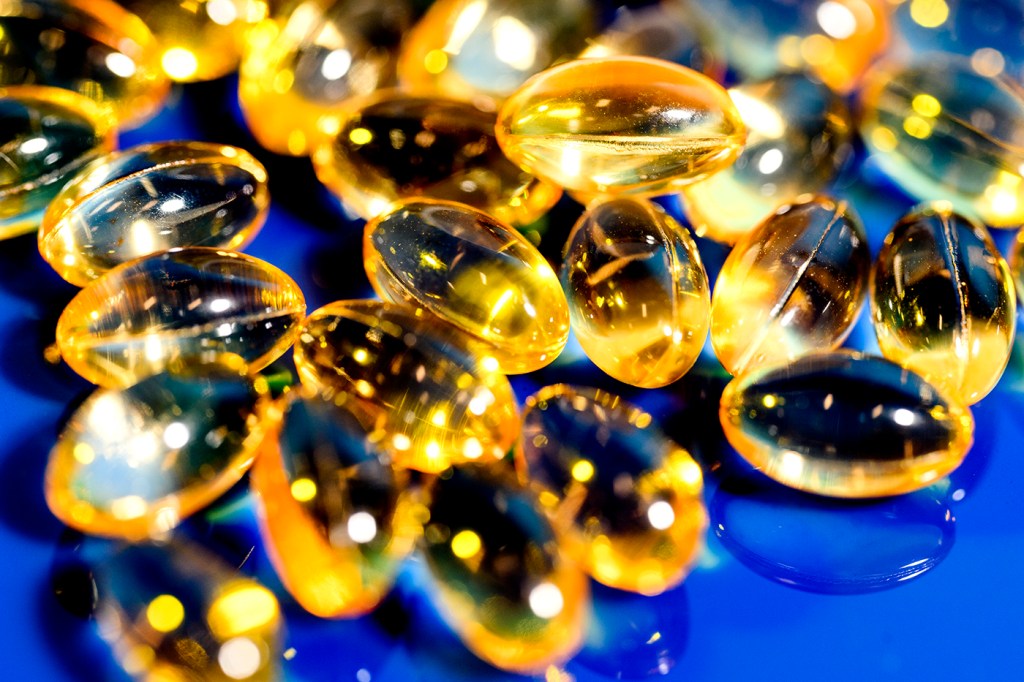Why you should take vitamin D this winter

Photo by Matthew Modoono/Northeastern University
The days are finally getting longer, but the sun is still low in the sky — and that means you probably aren’t getting your recommended daily allowance of vitamin D through solar rays alone.
Is a vitamin D supplement in order?
“It’s something that could be helpful for many people,” says Northeastern clinician researcher Carla Bouwmeester.
She says recent studies have shown that most people in the United States are not getting the recommended dietary amount of vitamin D, which is 600 international units (15 mcg) for those ages 1-70.
Unlike with some other vitamins, supplementation with vitamin D is relatively safe — it’s difficult, although not impossible, to consume too much, says Bouwmeester, a clinical professor of pharmacy and health system sciences at Northeastern’s Bouvé College of Health Sciences.
The role of vitamin D
Vitamin D is best known for increasing the efficiency of calcium absorption and promoting bone growth, Bouwmeester says.
But it also plays a complex and still mysterious role in promoting health throughout the bodily systems, she says.
“It’s also used as a signaling molecule to help maintain levels of other chemicals in the body. Things like the calcium level in your blood and the phosphate level in your blood are all partly controlled by vitamin D,” Bouwmeester says.
“It’s really used in so many different ways,” she adds.
“Vitamin D has been studied for just about everything,” including cancer, depression and cardiovascular health, she says.
“My understanding of most of these clinical trials is there was no smoking gun and vitamin D alone is not going to cure these conditions for everyone. But there have been observational studies or population studies where researchers see an association where vitamin D supplementation may help with the symptoms.”
Winter means less sun and less D
“One of our primary sources of vitamin D is the sun. UVB light from the sun can activate vitamin D synthesis in your skin,” Bouwmeester says.
Winter poses a barrier to absorbing vitamin D through the sun both because colder weather means more clothing covering the skin and because there are fewer hours of direct sunlight.
In fact, research presented in Health magazine says winter sunlight is just too weak to promote vitamin D synthesis in locations above the 37th parallel — basically every place north of Los Angeles on the West Coast and north of North Carolina on the East Coast.
Foods such as salmon, tuna, beef liver, fish liver oil, fortified milk and cereal and mushrooms are excellent dietary sources of vitamin D, Bouwmeester says. “But not everyone can get an adequate amount from their diet alone.”
Fortunately, vitamin D is one of the safer supplements to take, she says.

Why vitamin D is safe
Bouwmeester says the recommended daily allowance for vitamin D is 600 international units (15 mcg) for individuals between the ages of 1 and 70.
After age 70, the RDA goes up to 800 international units (20 mcg) per day due to the aging body’s inability to absorb the vitamin as efficiently, she says.
While the RDA is the lower limit established by the Institute of Medicine, the institute also sets values for the tolerable upper intake level (UL) that are quite a bit higher, Bouwmeester says.
“The UL for vitamin D is 4,000 international units (100 mcg) a day. That’s a really wide window, which says to me as a pharmacist that vitamin D is a relatively safe supplement.”
“I think it’s safe to take vitamin D supplements that are in the range of 600 to 1,000 international units,” says Bouwmeester. “It’s very unlikely you would have any adverse effects.”
Older people in nursing homes may benefit from 2,000 to 3,000 international units a day, she says.
Too much vitamin D can cause nausea and vomiting, dehydration, and increased calcium levels that can lead to kidney stones, Bouwmeester says.
And studies of mega dosing older people aged 70 and older with a single yearly dose of 500,000 international units or 50,000 to 100,000 international units monthly actually showed an increased risk of falls, she says.
Featured Posts
You could be deficient — and not know
Most of Bouwmeester’s patients are older people with multiple comorbidities who are routinely screened for vitamin D levels.
She says she was surprised when a younger family member was recommended for screening after breaking a toe — and turned out to have low levels of vitamin D despite being an avid runner.
“I think there are a lot more people who potentially have lower vitamin D levels than they know about,” Bouwmeester says.
“Low levels of vitamin D can even be seen in younger people, and especially in places with less sun exposure in the winter.”
At this point in time, however, the U.S. Preventative Service Task Force has not found conclusive evidence to recommend routine vitamin D screening for the general population, Bouwmeester says.
When people are tested for vitamin D, levels less than 20 nanograms per milliliter (ng/mL) are considered deficient and those between 30 ng/mL and 50 ng/mL are considered optimum, Bouwmeester says.
Hitting the target with vitamin D3 supplementation is “kind of hit or miss unless you know your current vitamin D level,” she says, adding there’s a lot of controversy in determining the exact dosages people need to address deficiencies.
Vitamin D absorption may also be decreased in those with higher body weight, darker skin color, older age, or spending more time indoors, Bouwmeester says.
“An assumption is that to increase one point in your vitamin D level you need about 100 units of vitamin D. So, again, even taking 1,000 units of vitamin D is not going to send your levels through the roof. It’s going to increase your level by about 10.”
How to take vitamin D
As a dietary supplement, vitamin D3 products are not regulated by the FDA, Bouwmeester says.
She recommends customers look for a USP verification label, which means the supplement has been certified by the United States Pharmacopeia for quality ingredients and shelf life.
“Since vitamin D is a fat soluble vitamin, you’ll get more absorption if you take it with a meal or a drink that has fat content in it,” Bouwmeester says.
She says she does not recommend that her patients, who have clinical reasons to take vitamin D, vary their doses by season.
The most important thing with supplementation is to make it a regular habit, Bouwmeester says. “I tell them to take a consistent dose, regardless of sun exposure.”
“If you are taking vitamin D supplements for a medical condition, it is important to take it as prescribed, regardless of season or sun exposure,” she says.
For other people, supplementation may vary with the seasons.
“The average healthy person can consider taking supplements with 600 IU (15 mcg) to 1,000 IU (25 mcg) of vitamin D in the winter or when they expect less exposure to UVB light.”











